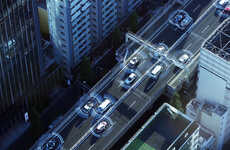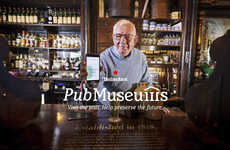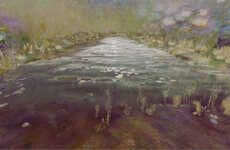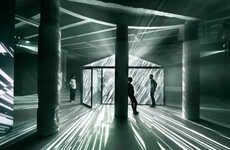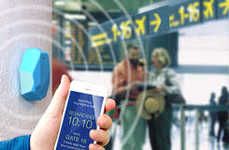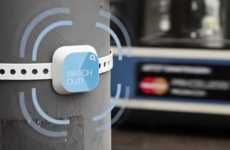
The Guggenheim Musem is Testing Beacon Technology
Rahul Kalvapalle — September 25, 2014 — Tech
References: guggenheim.org & blogs.wsj
Who said beacons are just for retail stores? The prestigious Solomon R. Guggenheim in New York is testing beacon technology to attempt to improve the way customers interact with museum exhibits.
Beacon technology uses Bluetooth low energy and sensor technology throughout physical locations; these devices connect with people's smartphones to send them targeted ads, alerts and location-specific help and guidance.
In the museum environment, it is hoped not only that the technology will allow for better and more meaningful interactions between visitors and exhibits, but that traffic flow data could inform museum design and infrastructure projects.
Another advantage of beacon technology is that many beacon devices are compact, discreet and unobtrusive, which is important for the Guggenheim Museum given its status as a National Historic Landmark.
Beacon technology uses Bluetooth low energy and sensor technology throughout physical locations; these devices connect with people's smartphones to send them targeted ads, alerts and location-specific help and guidance.
In the museum environment, it is hoped not only that the technology will allow for better and more meaningful interactions between visitors and exhibits, but that traffic flow data could inform museum design and infrastructure projects.
Another advantage of beacon technology is that many beacon devices are compact, discreet and unobtrusive, which is important for the Guggenheim Museum given its status as a National Historic Landmark.
Trend Themes
1. Museum Beacon Technology - Opportunity for other museums and cultural institutions to adopt beacon technology to enhance visitor experiences and gather traffic flow data.
2. Cultural Institution Mobile Apps - Opportunity for cultural institutions to develop mobile apps that utilize beacon technology to provide interactive exhibit experiences and location-specific guidance and information.
3. Smart Building Infrastructure - Opportunity for building developers to incorporate beacon technology to gather data on traffic flow and user behavior to inform efficient and effective building design.
Industry Implications
1. Museums and Cultural Institutions - Museums and cultural institutions can benefit from using beacon technology to provide enhanced visitor experiences and gather data on traffic flow and exhibit interaction.
2. Mobile App Development - The adoption of beacon technology in the cultural institution sector presents an opportunity for mobile app developers to offer unique solutions for interactive exhibit experiences and location-specific guidance and information.
3. Building Design and Construction - Incorporating beacon technology into building design presents an opportunity for architects, building developers, and construction companies to create more efficient and effective smart building infrastructure.
4.4
Score
Popularity
Activity
Freshness



